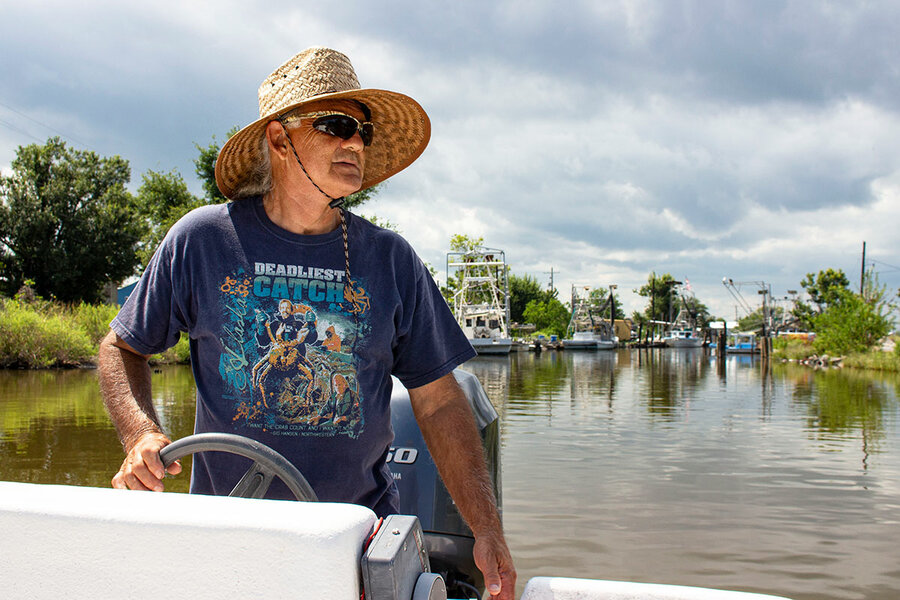Original publication by Halina Baczkowski for abc.net.au on 16 October 2021
Discarded oyster shells from restaurants, usually destined for landfill, are being recycled to create shellfish reefs in Queensland’s Moreton Bay.
It is the biggest community-driven reef restoration in Australia.
For the past four years, the Brisbane chapter of the non-for-profit recreational fishing group, OzFish, has collected used oyster shells from wholesalers and restaurants.
Robbie Porter is employed by OzFish and heads the central Moreton Bay chapter.
“A lot of the businesses, especially restaurants, are really looking at end of use. They want to compost everything; they want to recycle everything, or reuse or just reduce,” he said.
Key points:
- Oyster reefs, like coral reefs, provide structures where marine plants and animals can live
- Oyster shells often end up in landfill because they do not decompose and cannot be composted
- The Billion Oyster Project claims to have restored 47 million live oysters
But he said because oyster shells don’t decompose, they cannot be composted.
“It basically has no other option except to dump it and fill up our landfill sites,” he said.
About four years ago, Mr Porter heard about a shellfish reef restoration project in the Noosa River and then another in the Pumiscestone Passage north of Brisbane.
“The scientists involved are so passionate, and they do such great work … so I felt that this is what I’m going to do,” Mr Porter said.
“I was having a career change and had some time on my hands and thought, ‘I need to fix Moreton Bay’.”
Overlooked oyster reefs
Oyster reefs, like coral reefs, provide structures where marine plants and animals can live.
Ben Gilby studies marine science and animal ecology at the University of the Sunshine Coast and has been involved in reef restoration for five years.
Dr Gilby said oyster reefs are an extremely important part of coastal landscapes.
“And we know that in Moreton Bay, we’ve lost about 96 per cent of them,” he said.
“Perhaps up to 85 per cent of shellfish reefs have been lost globally. And so there’s a big movement globally to start restoring these oyster reefs.”
In 2014, the Billion Oyster Project was created involving students, volunteers, and local communities to restore the oyster reefs in New York Harbour.
Since its inception, the program claims to have restored 47 million live oysters with more than 770,000 kilograms of shells collected.
In Queensland, the numbers are smaller but no less impressive.
Dr Gilby said where reefs have been recreated on the Sunshine Coast, fish diversity and abundance have risen more than sixteen-fold in about three years.
Joondubarri man, Phill Kruse, is involved with the reef restoration in the Pumicestone Passage and has frequented the area since he was a child.
“I remember coming out here and being able to go fishing and take home a nice big bucket of whiting or something like that,” he said.
“When my kids were young, and I brought them up here there wasn’t a lot of fish in the passage.”
How does it work?
The oysters are collected and taken to a vacant site at the Port of Brisbane, where volunteers place them in mounds open to the elements.
After about a year, they are washed, placed in cages, affectionately named ROBS (robust oyster baskets), and are taken to Brisbane’s Moreton Bay. During the low tide, ROBS are placed on an abandoned oyster lease.
Robbie Porter said getting the right oyster lease in the right spot was important.
“We looked at leases all up and down in Moreton Bay and discovered this one was probably the highest spat (oyster larvae) fall and accessible for us at all times,” he said.
“So we got some money together from some funding and approached some people and bought it from them.”
The project initially raised some eyebrows with other local oyster farmers.
“A lot of them don’t really understand that we want to grow oysters and not eat them, but they’re really supportive,” he said.
“I think as a rec fisher … you see a depleting resource.. like it’s hard to catch fish.”
“It makes you realise that there’s so many people on the planet with so few resources that we really have to look after what we’ve got.”
Plans for the future
The initial work in Queensland was done with the help of Landcare offshoot, Healthy Land and Water, as well as Traditional Owners, the Kubi Kubi and Joondubarri people.
Healthy Land and Water are now helping Robbie Porter expand his reefs through Moreton Bay.
The groups have just secured more land at the Port of Brisbane, which will make it the largest community-driven shellfish reef restoration site in Australia.
It will also be the largest reef restoration project, of any sort, in Queensland.
Mr Porter says he is keen to get more oyster businesses onboard.
“I can’t see why anyone would be disappointed for us to take away their rubbish for free,” he said.
“We know one of our suppliers, it saves him about nine grand a year. He used to pay for someone to come and pick up his oyster shells. So, we just need people to reach out and say, ‘Hey, we’ve got all these shells that we’re dumping. Come and get them’, and we’ll be there.”




